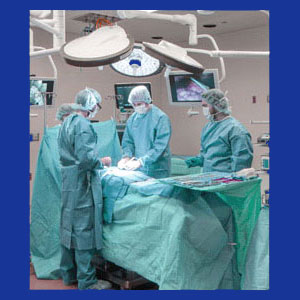
Cervical disc replacement surgery provides the only other viable option to spinal fusion for the majority of patients who would otherwise be forced to acquiesce to dangerous and unnatural spondylodesis operations. Disc replacement surgery promotes spinal function as nature intended and does not subject the patient to the usual cascade of degenerative effects created inherently by all forms of spinal fusion. However, not everything about disc replacement is positive, since there are still many significant downsides to consider before undergoing treatment.
Disc replacement surgery in the neck remains a minor specialization in the orthopedic community, although the procedure holds promise for good results now and even better results in the future, as improved synthetic disc designs are achieved.
This dialog provides an objective view of cervical disc replacement procedures as they exist today and as we expect them to evolve in the near future. We will explore the benefits and risks of synthetic disc implantation in the neck and advise patients who are considering this procedure how to achieve the very best results.
Cervical Disc Replacement Explained
The cervical intervertebral discs separate the spinal bones from one another and exist at every spinal level except between C1 and C2. These discs are made mostly of a water-filled nucleus called the nucleus pulposus, with a tough fibrous outer wall called the annulus fibrosus. The cervical spinal discs provide cushion and insulation from shock for the spine, as well as facilitate movement of individual spinal levels. Without the discs, the spine would simply be an unyielding length of bone.
Spinal discs can wear out (disc degeneration) or suffer injury in the form of bulging or herniation. This may make them accept blame for causing neck pain and related neurological symptoms in the neck, shoulders, arms and hands due to pinched nerve formation enacted by foraminal stenosis. In some cases, these disc issues can also be responsible for creating central spinal stenosis and subsequent widespread pain and functional limitation including in the lower body tissues, such as the genitals, hips, legs and feet.
In order to treat these disc problems, a doctor might suggest disc replacement surgery, wherein a synthetic spinal disc substitute is implanted to rectify a damaged organic disc structure. The new synthetic disc will function in the same capacity, allowing the spine to bend while still absorbing and mitigating stresses throughout the vertebral column. The synthetic disc might be held in place by the natural design of the spine combined with gravity or may require fixation using various mechanisms of attachment.
Disc Replacement Surgery
Surgical disc replacement seems like a difficult proposition, but in reality, the technique is less invasive than most forms of modern neck surgery. The procedure almost always involves state of the art tools and practices that minimize collateral damage and can be performed using several small incisions, typically on the flank or anterior surface of the body.
The patient will undergo a complete disc removal first in the form of discotomy, then the intervertebral space is prepared to receive the new synthetic disc. Depending on the type of disc prosthesis used, this might be a simple or more complex task for the surgeon. Once the spine is ready to receive the synthetic disc, the prosthesis will be inserted and fixed in place when indicated by its design.
Once the disc is situated correctly, the incisions will be closed and the rehabilitation phase of treatment begins. Most patients will be made to stand and walk almost immediately following surgery and the majority will only remain in the hospital for a short time, with the rehabilitation work being performed as outpatients, as long as no complications develop that may entail extended hospitalization.
Cervical Disc Replacement Comparison to Spinal Fusion
Traditionally, significant disc pathologies were treated using spondylodesis, more frequently called spinal fusion. This technique removes the damaged disc tissue and fuses the bones of the spine together, eliminating the deficient intervertebral level completely. Fusion inherently damages the spine and reduces its ability to function as naturally designed. The results of fusion include a universal escalation in degeneration in the spinal levels surrounding the fusion, an increased risk of spinal injury at and near the fusion site and a markedly greater risk for continued or worsened symptomology.
In contrast, cervical disc replacement surgery does not change the functionality of the spine. Instead, it preserves the natural way that the spine moves and bends. This is a distinct advantage that allows many postoperative patients to lead unencumbered lives that spinal fusion patients can not achieve.
Fusion recipients often require hardware-assisted bonding of the spinal segments. This hardware often fails when left in place, creating frequent problems that may require follow-up surgical procedures. Similarly, artificial disc replacement surgeries also require hardware in the form of the synthetic disc itself and these devices might also fail with time. Artificial discs have a better track record than the screws, cages, pins and bars used to secure fusions, but hardware-related complications still comprise the majority of significant postoperative problems suffered.
We are excited about the future developments of new synthetic spinal disc replacement devices, as well as the possibility for nucleus only replacement for indicated disc diagnoses. We feel that cervical disc replacement is more enlightened than spinal fusion (which, by the way, demonstrates no benefits for providing pain relief statistically for any diagnosis) and should be the future of surgical disc treatment for substantial and chronic intervertebral pathologies.
Neck Pain > Neck Surgery > Cervical Disc Replacement





